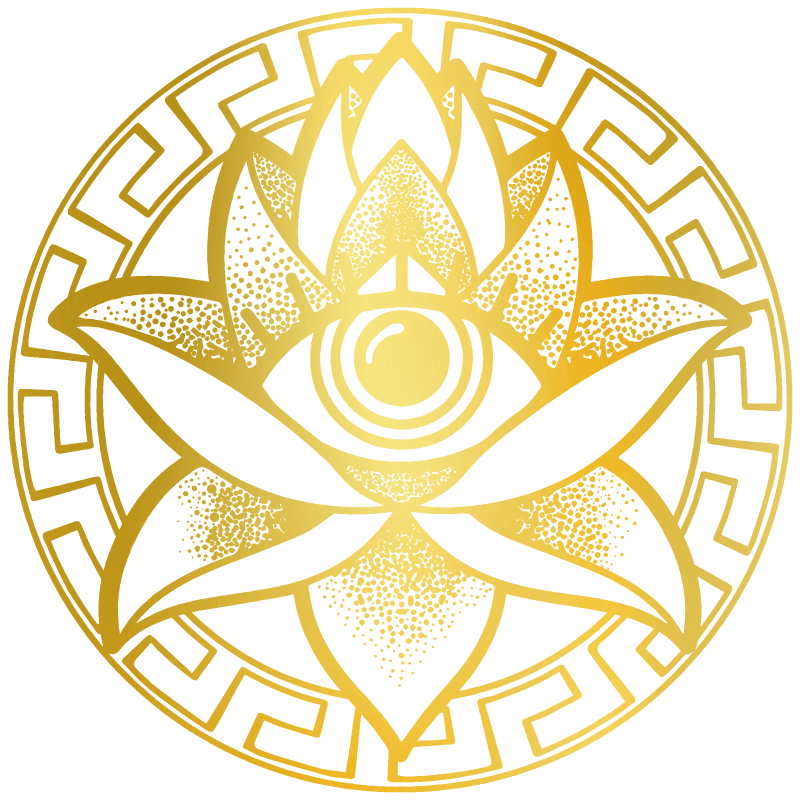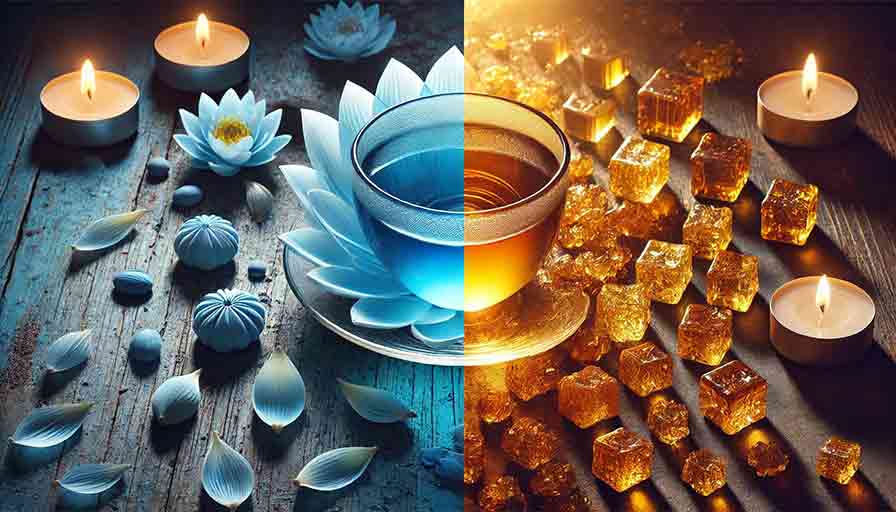For centuries, Blue Lotus (Nymphaea caerulea) has captivated minds and hearts across civilizations—from the mystical rituals of ancient Egypt to modern wellness enthusiasts seeking relaxation, euphoria, and spiritual clarity. Known for its tranquil, mood-enhancing, and mildly psychoactive effects, Blue Lotus is available in multiple forms today, with Blue Lotus Tea and Blue Lotus Resin being the most popular. Both forms carry unique benefits and experiences, but which one suits you best? Let’s explore the subtle and powerful differences between these two forms in detail.
The Ancient Origins of Blue Lotus
Before diving into the comparison, it’s essential to understand the roots of Blue Lotus. Revered as the “flower of enlightenment,” this aquatic plant was sacred to Egyptian priests and pharaohs. Often depicted in hieroglyphs and temple carvings, the Blue Lotus symbolized rebirth, serenity, and divine connection. Traditionally, the petals were steeped in wine or water to create a calming, euphoric drink that opened the mind during spiritual ceremonies.
Today, modern extraction methods allow this legendary flower to be enjoyed in various forms—including tea, tincture, oil, and resin—each offering its own potency and purpose.
Understanding Blue Lotus Tea
What Is Blue Lotus Tea?
Blue Lotus Tea is made by steeping dried Blue Lotus petals in hot water. The tea produces a delicate, floral aroma and a mildly bitter taste with sweet undertones. Its gentle nature makes it perfect for those seeking a light introduction to the world of Blue Lotus.
How Blue Lotus Tea Works
When consumed, the apomorphine and nuciferine compounds in the flower interact with dopamine receptors, promoting relaxation, emotional balance, and a sense of subtle euphoria. Unlike synthetic stimulants, these effects are soft and natural, making Blue Lotus Tea ideal for calming rituals or evening wind-downs.
Benefits of Blue Lotus Tea
-
Relaxation & Stress Relief: The tea offers a tranquil calmness that eases mental tension and physical fatigue.
-
Improved Sleep Quality: Its sedative properties make it a gentle natural aid for insomnia or restless nights.
-
Enhanced Mood: Drinkers often describe a mild, uplifting sensation that elevates mood and promotes emotional harmony.
-
Spiritual Focus: Used in meditation, Blue Lotus Tea deepens mindfulness and inner peace.
Best Way to Prepare Blue Lotus Tea
To experience its full potential:
-
Add 3–5 dried petals to hot water (not boiling).
-
Steep for 10–15 minutes.
-
Optionally, enhance the brew with honey or lemon for flavor and balance.
Avoid using excessively hot water, as it may degrade the delicate alkaloids responsible for its psychoactive effects.
Exploring Blue Lotus Resin
What Is Blue Lotus Resin?
Blue Lotus Resin is a concentrated extract derived from the flower’s petals and stamens through an evaporation or solvent-extraction process. The result is a thick, sticky substance that embodies the plant’s pure essence—rich in psychoactive and aromatic compounds. Compared to tea, resin delivers a stronger and faster-acting experience.
How Blue Lotus Resin Works
Because of its concentrated nature, Blue Lotus Resin contains a higher percentage of alkaloids, especially apomorphine, which binds to dopamine receptors to trigger mild euphoria and relaxation. It’s typically smoked, vaped, or dissolved in hot water or alcohol-based tinctures.
Benefits of Blue Lotus Resin
-
Intense Relaxation: Delivers rapid calmness and body relaxation—ideal for deep meditation or unwinding after a long day.
-
Enhanced Euphoria: Produces a slightly more noticeable mood elevation compared to the tea.
-
Concentrated Potency: A small amount goes a long way, making it cost-effective over time.
-
Versatile Usage: Can be smoked, infused in oil, or used in aromatherapy blends.
How to Use Blue Lotus Resin Safely
To experience it responsibly:
-
Start with a pea-sized amount.
-
Melt into hot tea, mix with wine, or smoke gently using a pipe or vaporizer.
-
Allow 10–15 minutes for effects to settle in.
Avoid overuse, as the higher concentration can cause mild dizziness or grogginess in sensitive users.
Blue Lotus Tea vs. Resin: A Detailed Comparison
| Feature | Blue Lotus Tea | Blue Lotus Resin |
|---|---|---|
| Potency | Mild and gradual | Strong and fast-acting |
| Form | Dried petals | Concentrated extract |
| Taste & Aroma | Floral, smooth | Earthy, dense aroma |
| Experience | Subtle calm and relaxation | Deep euphoria and tranquility |
| Ease of Use | Simple to brew | Requires preparation |
| Best For | Beginners, daily users | Experienced users, deeper sessions |
| Duration of Effects | 1–2 hours | 2–4 hours |
Both forms offer valuable ways to explore the essence of Blue Lotus, but the choice depends entirely on your purpose and desired intensity.
Which Form Suits You Best?
Choose Blue Lotus Tea If:
-
You prefer a gentle, ceremonial experience.
-
You want something easy to prepare and incorporate into daily routines.
-
You enjoy the ritual of sipping herbal infusions.
-
You’re new to Blue Lotus and want to start slow.
Choose Blue Lotus Resin If:
-
You seek stronger effects or deeper emotional release.
-
You’re experienced with herbal extracts or natural entheogens.
-
You want quick results for meditation or creative inspiration.
-
You enjoy experimenting with aromatherapy or vaporized botanicals.
Ultimately, both forms can complement each other. Tea can be used for daily relaxation, while resin may serve as a special ritualistic enhancer when you desire deeper tranquility or creativity.
Combining Blue Lotus Tea and Resin for a Holistic Experience
Many enthusiasts discover that combining both forms unlocks a harmonious synergy. By drinking Blue Lotus Tea and adding a small amount of resin, you amplify the relaxing and euphoric effects while preserving the soothing ritual of tea drinking. This combination also enhances clarity, focus, and introspection—perfect for meditative evenings or creative reflection.
Tips for Buying High-Quality Blue Lotus Products
When sourcing Blue Lotus Tea or Resin, quality is everything. Always purchase from reputable brands that offer:
-
Organic, pesticide-free flowers.
-
Third-party testing for purity and authenticity.
-
Transparent sourcing from Egypt or Thailand.
-
Proper storage and packaging to preserve alkaloid potency.
Look for deep blue or purple petals and a rich, natural aroma—both indicators of a potent product. Avoid artificially colored or overly fragrant versions, which may indicate low quality or chemical additives.
Potential Side Effects and Precautions
While generally safe, Blue Lotus should be used mindfully:
-
Avoid combining with alcohol or sedatives.
-
Pregnant or breastfeeding women should refrain from use.
-
People with dopamine-related conditions or medications should consult a healthcare provider.
-
Always start with a small dose to gauge sensitivity.
Remember, moderation enhances experience and ensures long-term enjoyment.
Final Thoughts
The Blue Lotus remains a timeless symbol of serenity and awakening. Whether you choose Blue Lotus Tea for its gentle elegance or Blue Lotus Resin for its potent depth, both paths lead to the same goal—inner peace, clarity, and mindful relaxation. Your perfect form depends on your lifestyle, goals, and personal sensitivity.
In the end, the true magic of Blue Lotus lies not only in its alkaloids but in the way it connects us—to nature, to stillness, and to ourselves.
FAQs
1. What is the main difference between Blue Lotus Tea and Resin?
Blue Lotus Tea is made from dried petals steeped in hot water, offering a mild and soothing experience. Blue Lotus Resin, on the other hand, is a concentrated extract that delivers stronger, faster-acting effects and deeper relaxation.
2. Is Blue Lotus Tea or Resin better for beginners?
Blue Lotus Tea is ideal for beginners because of its gentle potency and simple preparation. It allows newcomers to experience the calming and mood-enhancing effects of Blue Lotus without overwhelming sensations.
3. Can Blue Lotus Resin be added to tea?
Yes. You can add a small amount of Blue Lotus Resin to hot tea for a stronger and longer-lasting effect. This combination enhances relaxation and helps balance body and mind.
4. Are there any side effects of using Blue Lotus?
When used responsibly, Blue Lotus is generally safe. However, excessive use can cause mild dizziness or drowsiness. It’s best to start with a low dose and avoid mixing it with alcohol or sedatives.
5. Where can I buy authentic Blue Lotus products?
High-quality Blue Lotus Tea and Resin can be purchased from reputable herbal suppliers that provide organic, lab-tested products. Always look for natural color, fragrance, and transparent sourcing from Egypt or Thailand.

